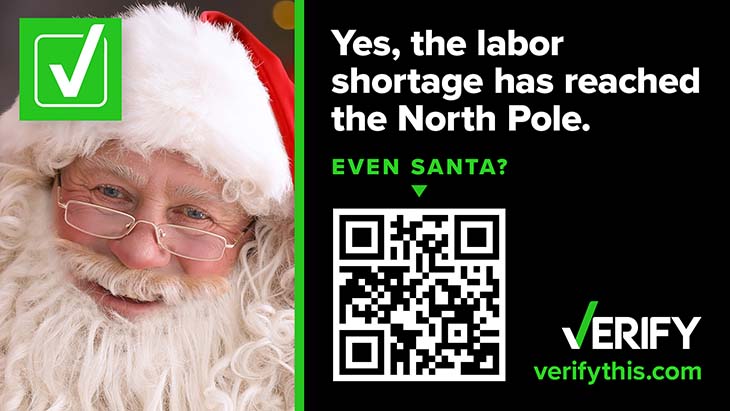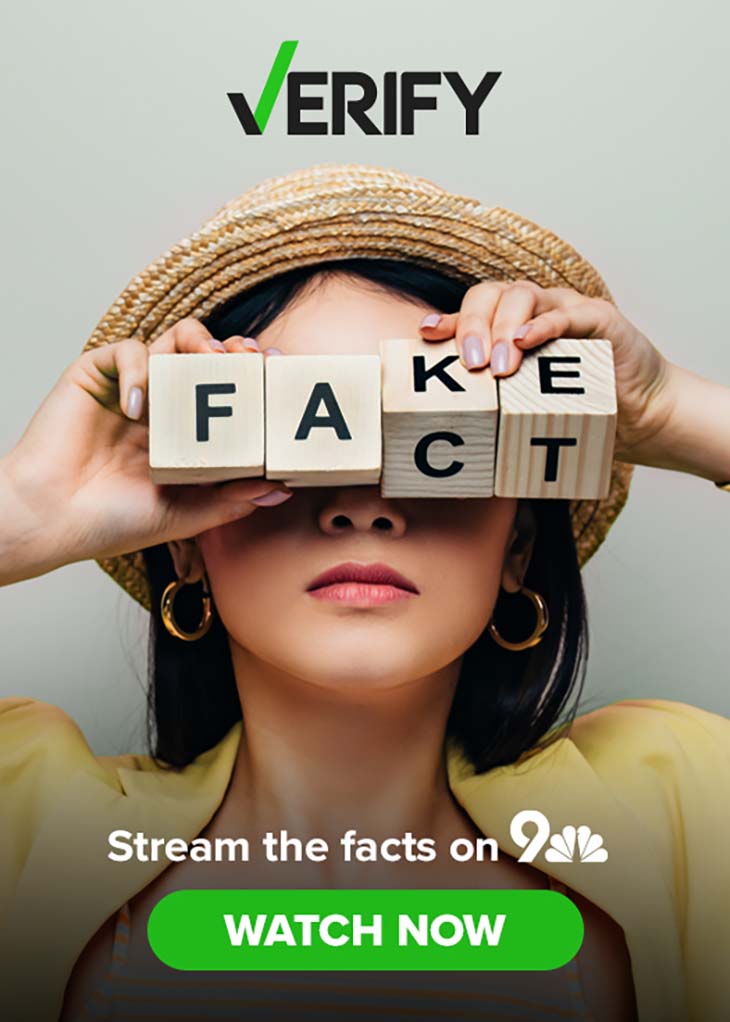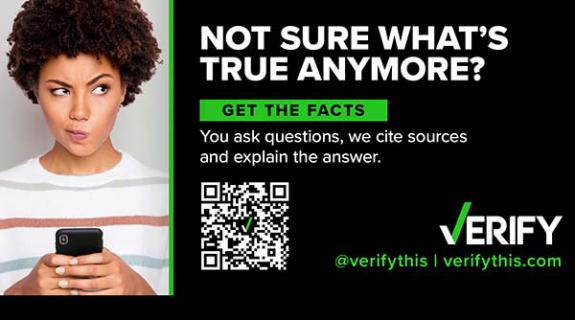Tegna spent three weeks prior to the holidays getting the word out about its fact-checking news initiative, Verify, via an out-of-home, social, digital and on-air campaign that ran in 18 markets across the country, including Atlanta, Cleveland, Dallas, Denver, Detroit, Houston, New York City, San Diego, San Francisco and Washington, D.C.
Verify started as a station-based initiative in 2015 and the premise behind it is simple: Viewers submit questions about things they would like to have fact-checked. If the Verify team selects the viewer’s question, they fact-check it and provide a yes – via a green checkmark – or a no, via a white x in a red box.
For example, the Verify team recently fact-checked two statements allegedly made by members of the U.S. Supreme Court during its recent hearing of oral arguments in a case challenging the administration’s proposed vaccine mandate for federal workers and for those employed at large companies. (The high court on Thursday blocked that mandate.) The team found that Supreme Court Justice Neil Gorsuch said that “hundreds, thousands of people die of the flu each year,” which is true, not “hundreds of thousands of people die of the flu each year,” which is not even though that false statement was retweeted many times after the hearing. They also found that Supreme Court Justice Sonia Sotomayor’s statement that 100,000 kids were hospitalized with COVID-19 was not true.
During last spring’s NewFronts, Tegna told advertisers that it was taking Verify national and investing in a national team of reporters and fact-checkers. Once that was completed, Tegna decided to get the word out about the initiative.
“What we learned is that consumers don’t understand Verify very well yet,” said Meredith Conte, vice president, marketing, Tegna. (Conte also serves as treasurer of Promax’s board of directors.)
The campaign featured Verify’s already-established neon-green hero color accompanied by black and white.
“Verify’s existing palette is already very eye-catching. We used green with Verify because green means go – this information is verified and fact-checked so you can get on with your day. Information that could be misinformation is red, signifying danger,” Conte said.
Some of the marketing assets also included a QR code that took viewers to the VerifyThis.com website.
“We knew we were living in a contactless world and we thought a QR code would be a very easy way to grab and go with Verify, but it had mixed results,” Conte said. “We found that if you use a QR code in out-of-home advertising, people are on the move so they don’t stop and engage with it. In a restaurant when they have to use a QR code to see a menu, they are held captive.”

Moving billboards ran in such high-traffic areas as airports, subways and subway stations and in busy intersections, such as on 7th Avenue in New York City’s Times Square.
“We really cherry-picked which airports would see a lot of traffic over the holidays,” said Conte. “Houston is a huge hub in one of our largest markets. It’s a place with a high volume of news consumers and people who are held captive while traveling.”
While Tegna expanded the campaign to be so big as to attract the attention of busy travelers at Houston International Airport, it also made the campaign intimate enough to run across such social media platforms as Twitter, TikTok, Snapchat, Facebook and YouTube. More than 200,000 followers engage with Verify across social media platforms, email and text message. Tegna encourages people to text their questions to Verify at 202-410-8808.
“We placed programmatic buys and also published spots on specific news websites that news consumers frequent. Digital was a big piece of this campaign. We placed plenty of advertising on YouTube, which is a very video-heavy environment, and saw nice numbers there,” Conte said.
Tegna-owned stations also ran :30 and :15 spots on their air and on their digital platforms, with stations delivering more than 1,100 brand spots and more than 2 million digital impressions in November.
As the campaign went on, the creative got a little looser and, in some cases, more honed in on the holidays.

Finally, in some markets Tegna bought space on the Roku home screen, driving viewers to their local news station. Tegna stations all over apps that can be accessed via viewers’ Roku smart TVs.

“Our stations have invested in Roku to drive streaming discovery of our local apps,” Conte said. “So we thought, ‘let’s see if we can’t drive install numbers of our streaming apps by using Verify as the vehicle to pull consumers through.”
For Tegna, Verify is one way for the company to live up to its mission to provide news and information to serve local communities.
“Verify is the right thing to do,” Conte said. “We have to restore confidence in news and trust in journalism. Trust is the bedrock of who we are as an industry.”













































__twocolumncontent.jpg)











